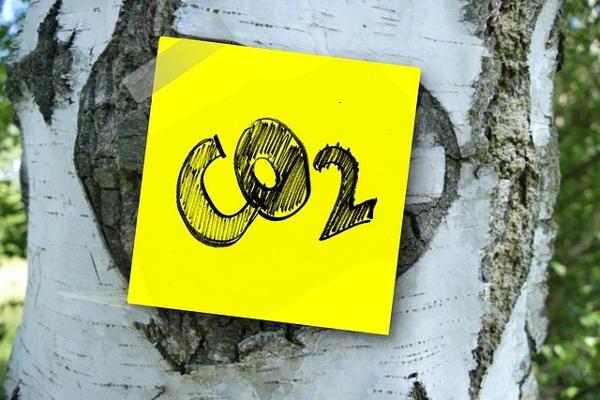Carbon capture, utilisation and storage (CCUS) describes a suite of technologies to capture CO2 that would usually be emitted from a process. The CO2 is then either utilised to create products with additional value or put into long-term storage to prevent its release into the atmosphere. Despite huge efforts in other decarbonisation pathways, we will not be able to reach global net zero within the aspired timeframe without capturing significant volumes of CO2 emissions in three main areas:
Capture and storage of fossil-based CO2 in process industries, in particularly those where CO2 is intrinsic to the process rather than energy related. This includes manufacturing basic materials such as cement, steel and fertiliser.
- Capture and storage of biogenic/atmospheric CO2 to remove CO2 from circulation in a process known as technical carbon dioxide removal (CDR), offsetting emissions in other parts of the economy.
- Capture and utilisation of CO2 to create low-carbon e-fuels when combined with hydrogen. These directly replace fossil fuels to decarbonise the transport sector.
Carbon capture itself is not a recent or novel idea. As an industrial scale chemical process, it has been around for decades, both in the United Kingdom and elsewhere in the world, as an everyday process in the fertiliser and petrochemical sectors.
The UK has a long history with CCUS, with the government keen to take advantage of the abundant CO2 storage opportunities in the North Sea. The UK has an ambition to capture 20-30Mt of CO2 per year by 2030, and at least 50Mt CO2 per year by 2035. Over the past 20 years the government has run multiple competitive processes aimed at bringing forward the first CCUS projects in the UK. However, despite apparently strong government desire and keen industrial partners, the UK has so far failed to develop any significant CCUS capacity.
In May 2021 the UK government launched the latest iteration of targeted support for large-scale CCUS deployment known as the ‘cluster sequencing process’. The process is aiming to bring forward a linked set of CO2 capture, CO2 transport and CO2 storage projects (known collectively as a ‘cluster’). Two clusters are targeted for development by the mid-2020s (known as the Track-1 clusters) and two more for the ‘late-2020’s’ (knowns as the Track 2 clusters). It is hoped that the projects in the Track-1 clusters will move forward to reach a Final Investment Decision later in 2024.
The Track-1 clusters are:
- The HyNet cluster, centred around Liverpool bay area of Northwest England, led by the Italian oil company, Eni and planning to capture and store 4.5Mt of CO2 per year in the first phase, and up to 10Mt of CO2 per year after to 2030; and
- The East Coast cluster, centred around the Teesside area of Northeast England, led by the oil majors bp, Equinor and TotalEnergies and planning to capture and store up to a total of 23Mt CO2 by 2035
The UK government is committing significant funding towards the cluster development programme – there are various development stage support programmes available in addition to 2 major funding sources:
- The £1bn (€1.2bn) CCS Infrastructure Fund (CIF), which will primarily support capital expenditure on T&S networks and industrial carbon capture projects; and
- Access to long-run revenue support payments via competitively allocated government-backed, with a total indicated support budget of £19bn (€22bn).
The financial support being offered should allow the UK government to bring forward CO2 capture projects across a broad range of target industries. Indeed, the mechanisms themselves are tailored to the specific cost and investment needs of specific industries. As of May 2024, we see CO2 capture support models being rolled out for Power-CCUS, Industrial CCUS (such as cement, chemicals and refining), waste-processing, low-carbon hydrogen, and Greenhouse Gas Removal. Each of these capture models has seen interest from a range of industrial players.
This financial support on offer is significant, and together constitutes one of the largest funding programmes for CCUS anywhere in the world. It is deemed necessary in the UK to jump start the CCUS industry to 2030 and address a range of market entry barriers and market failures that currently exist for CCUS in both the UK and elsewhere. The long-term vision for the sector however is for a transition to a competitive market where an established CCUS eco-system enables the UK to reach Net Zero, receives widespread public support and is supported primarily by carbon prices.
CCUS Market Phases

By one measure at least the programme has been very successful in bringing forward a vibrant CCUS industry in the UK – there are now >100Mt of capture projects in development centred around 13 potential CO2 hubs spread across Great Britain. The next step is to see the first round of these CO2 stores, pipelines and capture project progress to the construction phase in late 2024. If that happens then we will truly see the UK re-take a leading role in CCUS technology in Europe and the world.
The above article is adapted from an original webinar for Centro Studi in Economia e Regolazione dei Servizi, dell'Industria e del Settore Pubblico




















